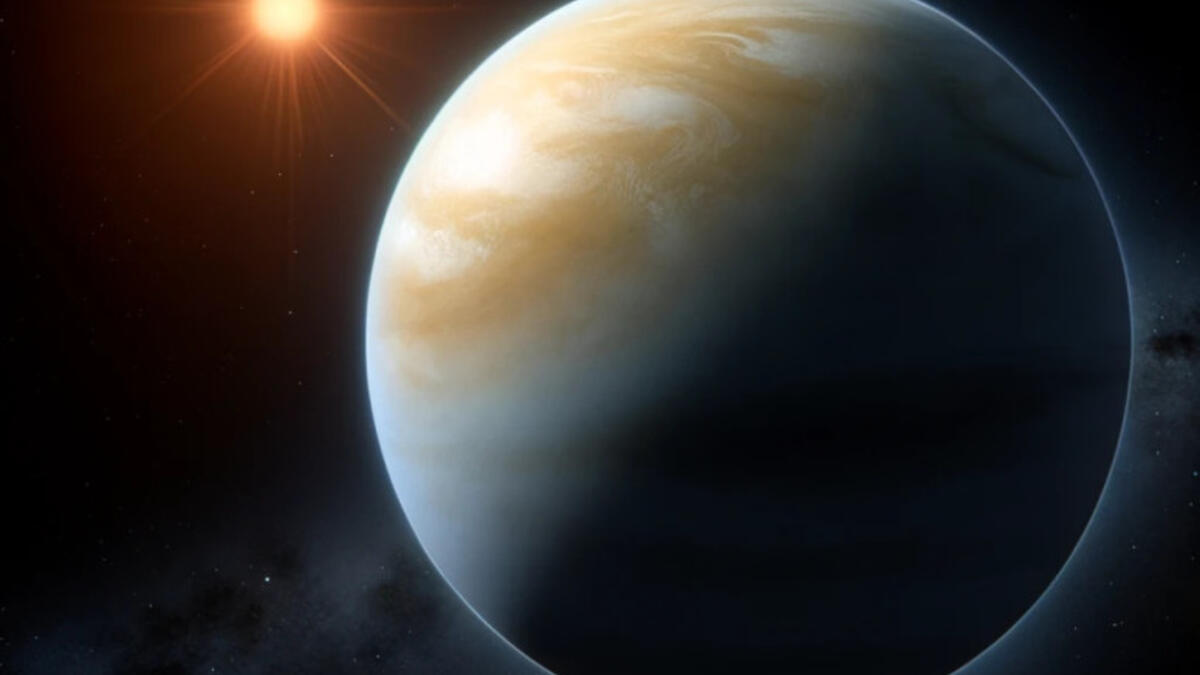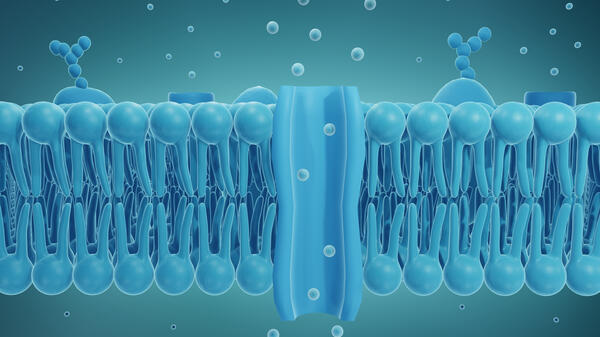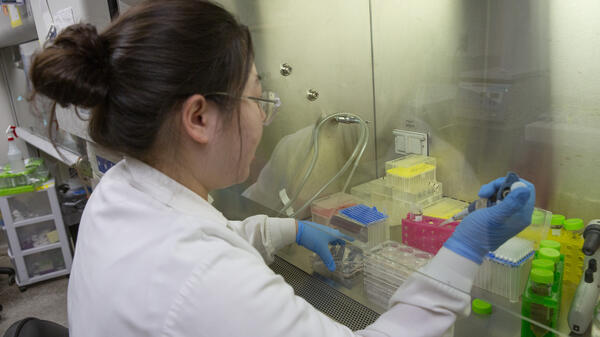ASU researchers contribute to groundbreaking discovery on exoplanet formation

The sulfur-laden atmosphere discovered on gaseous exoplanet GJ 3470 b, shown here in an illustration orbiting its star in the constellation Cancer, could help researchers figure out how it (and similar planets) were formed. Image courtesy Department of Astronomy, UW–Madison
A team of astronomers have discovered the small exoplanet GJ 3470 b shrouded in a surprising yellow haze of sulfur dioxide, making the planet a prime opportunity for scientists trying to understand how worlds are formed.
Located about 96 light-years away in the constellation Cancer, GJ 3470 b is a gas “dwarf” roughly half the size of Neptune and 10 times the mass of Earth. First observed in 2012, its atmospheric composition has been further analyzed using the Hubble and Spitzer space telescopes. Recent observations with the James Webb Space Telescope (JWST) have revealed an unexpected molecular finding — the presence of sulfur dioxide.
The results of an upcoming paper detailing the finding were presented at the 244th meeting of the American Astronomical Society. The research is led by Thomas Beatty of the University of Wisconsin and includes ASU co-author and Sagan Postdoctoral Scholar Luis Welbanks, as well as Associate Professor Michael Line of the School of Earth and Space Exploration.
“In the era of JWST, our data is so exquisite that our models are playing catchup,” Welbanks said. “As such, the challenge was not only identifying the gases in the atmosphere of this small planet but determining whether their presence made sense.”
The ASU researchers spearheaded the modeling and interpretation efforts of these observations. Using state-of-the-art models, they were able to identify water, carbon dioxide, methane and sulfur dioxide.
“We went back and forth trying to make sense of the bumps and wiggles we could see in the spectrum because, if confirmed, they would make GJ 3470 b the coldest and least massive exoplanet for which we have ever detected sulfur dioxide,” Line said.
Indeed, these features were confirmed by the team’s observations and models. Their results demonstrate that GJ 3470 b, with a temperature averaging a mere 325 degrees Celsius, shows signs of active chemical reactions in the atmosphere, initiated by radiation from the nearby star. Moreover, the detection of these chemical species offered the team the information required to understand the overall composition of the planet.
“To produce the amount of sulfur dioxide that we measured, the atmosphere has to be rich in other chemical compounds that could serve as the fuel for this chemical reaction,” Line said. “Our observations and models confirm that the atmosphere of GJ 3470 b is richer in elements heavier than hydrogen/helium than that of Jupiter, and is more like that of Neptune and Uranus in our own solar system.”
Measurements of the composition of exoplanet atmospheres, like the ones reported by Welbanks, Line and their collaborators, help test general theories of how planets form and evolve.
“The puzzle pieces to understand planet formation have come mostly from observations of massive and hot planets, giving us limited information about a select group of planets,” Welbanks said. “Now, our results show that JWST can provide us with the much-needed insights for smaller, cooler planets like GJ 3470 b, and begin to answer how the larger population of planets may have formed.”
The combined efforts between observations and models will continue to provide insights into the origin of planets, their climate and their interactions with their environment. The team at ASU and their collaborators will keep searching for answers and, like in the case of GJ 3470 b, help us understand environments literally out of this world.
This research was supported by grants from NASA.
Press release written by University of Wisconsin with contributions from Kim Baptista at Arizona State University’s School of Earth and Space Exploration.
More Science and technology

Chilling discovery: Cold-sensing protein may pave the way for safer pain relief
For millions of people worldwide who live with chronic pain, the only treatments currently available often rely on opioids, which carry the risks of addiction and overdose. However, new research…

Harnessing benefits of stem cells for heart regeneration
Mehdi Nikkhah, an associate professor of biomedical engineering in the Ira A. Fulton Schools of Engineering at Arizona State University, and his collaborators at Mayo Clinic in Arizona have been…

Newly accredited ASU summer program opens up STEM opportunities for underrepresented students
It was Monday afternoon. Spotify was playing pop music in the background and the instructor stood behind a lectern wearing a paper Burger King crown. It is not a scene one would expect in a college…